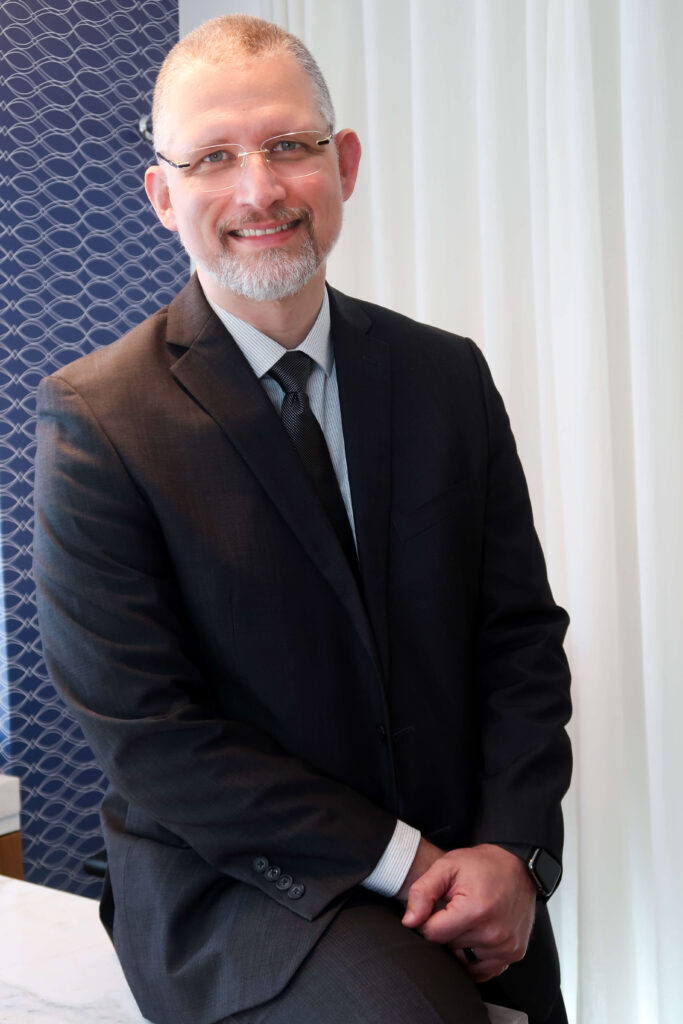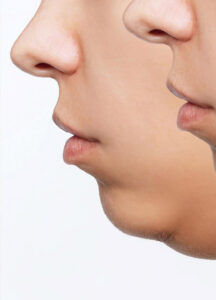

Ear surgery
Otoplasty - Ear Plastic Surgery
Otoplasty, also known as ear correction surgery, is a specialized procedure that aims to reshape and reposition the ears, providing aesthetic harmony to the face. The procedure involves correcting deformities or prominences, with incisions strategically placed to minimize visibility.
Otoplasty has several types:
- Conchal otoplasty: Corrects the depth of the concha, leaving it more open and natural.
- Shell and antihelix otoplasty: Corrects the shell and creates the antihelix, a cartilage fold that gives the ear its natural appearance.
- Otoplasty for floppy ears: The cartilage is repositioned and fixed with stitches or sutures, bringing the ear closer to the head.
- Otoplasty with cartilage graft: Used to reconstruct or enlarge missing or deformed parts of the ear.
Preoperative Otoplasty (Surgery of the flapping ear)
- 1. Obey the instructions given for admission
- 2. Report any abnormalities that may occur in their general condition.
- 3. Enter hospital fasting for at least 8 hours and do not bring valuables into the hospital.
- 4. Come accompanied to the hospital.
- 5. Avoid wearing earrings, rings, piercings, colored nail polish, etc. Any of these will be removed before surgery.
- 6. Avoid using medications that contain acetyl salicylic acid or salicylates in their formula (Aspirin®, AAS®, Melhoral®, some anti-inflammatory drugs). Avoid using GINKO BILOBA, ARNICA and VITAMIN E. All should be discontinued 10 days before surgery, or at the doctor's discretion. Inform the medical team if you need any medication other than the usual.
- 7. No smoking
Post-operative Otoplasty (Surgery of the flapping ear)
- 1) Avoid sun, cold, wind and local trauma for 14 days.
- 2. Attend the clinic for post-operative check-ups on the days indicated.
- 3. Obey the doctor's prescription.
- 4. You can return to school, work, etc. four to five days after surgery.
- 5. Free food from the second day onwards, mainly based on proteins (meat, milk, eggs) and vitamins (fruit).
Other facial procedures
Before and After - Otoplasty


Surgeries and procedures performed by Dr. Celso Boechat
Other Plastic Surgeries in Rio de Janeiro
From stunning beaches to vibrant aesthetics, discover the plastic surgeries that reflect Rio de Janeiro’s beautiful spirit and dynamic aesthetic standards.
Breast surgery
Raise your self-esteem, reaffirm your beauty.
Body Surgeries
Transformations for your ideal body.
Facial surgery
Facial renewal, bring out your true expression.
Floppy ears
Otoplasty: The most asked questions about ear surgery
Otoplasty has several types:
- Conchal otoplasty: Corrects the depth of the concha, leaving it more open and natural.
- Shell and antihelix otoplasty: Corrects the shell and creates the antihelix, a cartilage fold that gives the ear its natural appearance.
- Otoplasty for floppy ears: The cartilage is repositioned and fixed with stitches or sutures, bringing the ear closer to the head.
- Otoplasty with cartilage graft: Used to reconstruct or enlarge missing or deformed parts of the ear.
The scar from this surgery is barely visible, as it is located behind the ear, in the groove formed by the ear and the skull. What’s more, as the skin is very thin, the scar itself tends to be imperceptible, even in some techniques that use small incisions on the anterior face.
Certain patients may be prone to unsightly scarring (hypertrophic and keloid scars). This fact should be discussed during the initial consultation, as well as your family characteristics. Fair-skinned people tend to develop this type of scar less often.
Various clinical and surgical resources allow us to improve these unsightly scars at the right time. However, hypertrophic or keloid scars should not be confused with the natural evolution of the mediate healing period. Any doubts about your healing progress should be clarified during your post-operative visits, when we will have the opportunity to assess the stage you are at.
Various clinical and surgical resources allow us to improve these unsightly scars at the right time. However, the “mediate period” of normal healing (from the 30th day to the 12th month) should not be confused with a healing complication. Any doubts about your progress should be clarified with your doctor.
Children: usually under general anesthesia. Adults: usually local anesthesia with or without sedation.
Half a day to a day, depending on the type of anesthesia and the patient’s age.
However, the length of the surgical procedure should not be confused with the length of time the patient stays in the operating room, as this also includes the period of anesthetic preparation and post-operative recovery. Your doctor will be able to tell you the total time.
Every medical act includes a variable risk and plastic surgery, as part of medicine, is no exception. You can minimize the risk by preparing each patient properly, but you can’t eliminate it completely.
Some discomfort may occur in the post-operative period. When this happens, it is treated with common painkillers.
For the first few days, the ear is protected (especially in children) with a kind of cap to prevent local trauma. In some cases, it is recommended to wear ballet or tennis shoes during the first stages. weeks, or even a crepe bandage.
Around the 14th. day.
As soon as the bandage is removed, we will have achieved around 80% of the desired result. After 12 weeks, the result will be definitive.
The result is usually definitive, but as with everything in medicine, no guarantee can be given. In the event of a recurrence, corrective surgery is possible. In these cases, the costs of hospital materials, room fees, anesthetics, medication and other costs will be borne by the patient, even if the surgeon chooses not to set a fee.
Possible risks of Blepharoplasty
BLEFAROPLASTY, like any other surgery, has risks and complications, some of which are specific to it and others generic to any type of surgery. These include:
Generic
1. Allergies: Some medications or products used during surgery can cause allergic reactions, which can even lead to death. Allergic reactions are patient-dependent and can occur either to medicines or products that the patient has never had contact with, or to those that they have had previous contact with, even if they didn’t have a previous reaction.
2. Scarring: Changes in scarring can occur, such as dark or light coloration, widening, hypertrophy or keloids. Regular post-operative visits enable early diagnosis and control of these changes
3. Infection: Our body is colonized by countless bacteria, with which, at first, we live in extreme harmony. However, after surgery, they can cause infection, requiring treatment with antibiotics and rarely re-operation.
4. Hematoma: Accumulation of blood in the operated area, from a vessel that was not bleeding at the end of the operation, but did so in the immediate post-operative period.
5. Thrombosis: Any surgical procedure can lead to venous thrombosis. This can be predicted in predisposed patients, but can also occur in healthy patients without any predisposing factors. Thromboses can generate emboli that can cause Pulmonary Embolism, a serious condition that can lead to death.
Specific
1. Retro Bulbar Hematoma: Bleeding occurs in the posterior region of the eyeball, displacing it forward and possibly leading to blindness. In these cases, reoperation for drainage is urgently indicated.
2. Alopecia: This consists of hair loss in a small area, usually near the scars. It is a treatable complication, but it takes time and patience.
3. Ectropion: This is weakness of the lower eyelid, with detachment from the conjunctiva of the eye and exposure of the sclera. can cause chronic irritation of the affected eye. Because it is a natural evolution of the eyes with ageing, it can go unnoticed during surgery, requiring a second procedure for correction.
4. Dry Eye Syndrome: In some cases, reduced tear secretion may occur in one or both eyes. This is due to manipulation of the tissues near the lacrimal glands, leading to regional edema and reduced secretion. When caused by surgical trauma, it is temporary, requiring only the use of ophthalmic lubricants. For a variable period of time.


Scheduling
Make an appointment and get your questions answered
Schedule an appointment with plastic surgeon Dr. Celso Boechat. Discover the path to aesthetic transformation and improved self-esteem. Our specialized team is ready to guide you through the procedure options, answering your questions and creating a personalized plan to suit your needs. Book your appointment now and take the first step towards a more confident and radiant version of yourself.
Send a message via WhatsApp
Service and consultations
Call Us
(21) 997336862
Opening hours
Monday to Friday - 09:00 - 21:00
Saturdays and Sundays - Closed, only for surgeries




